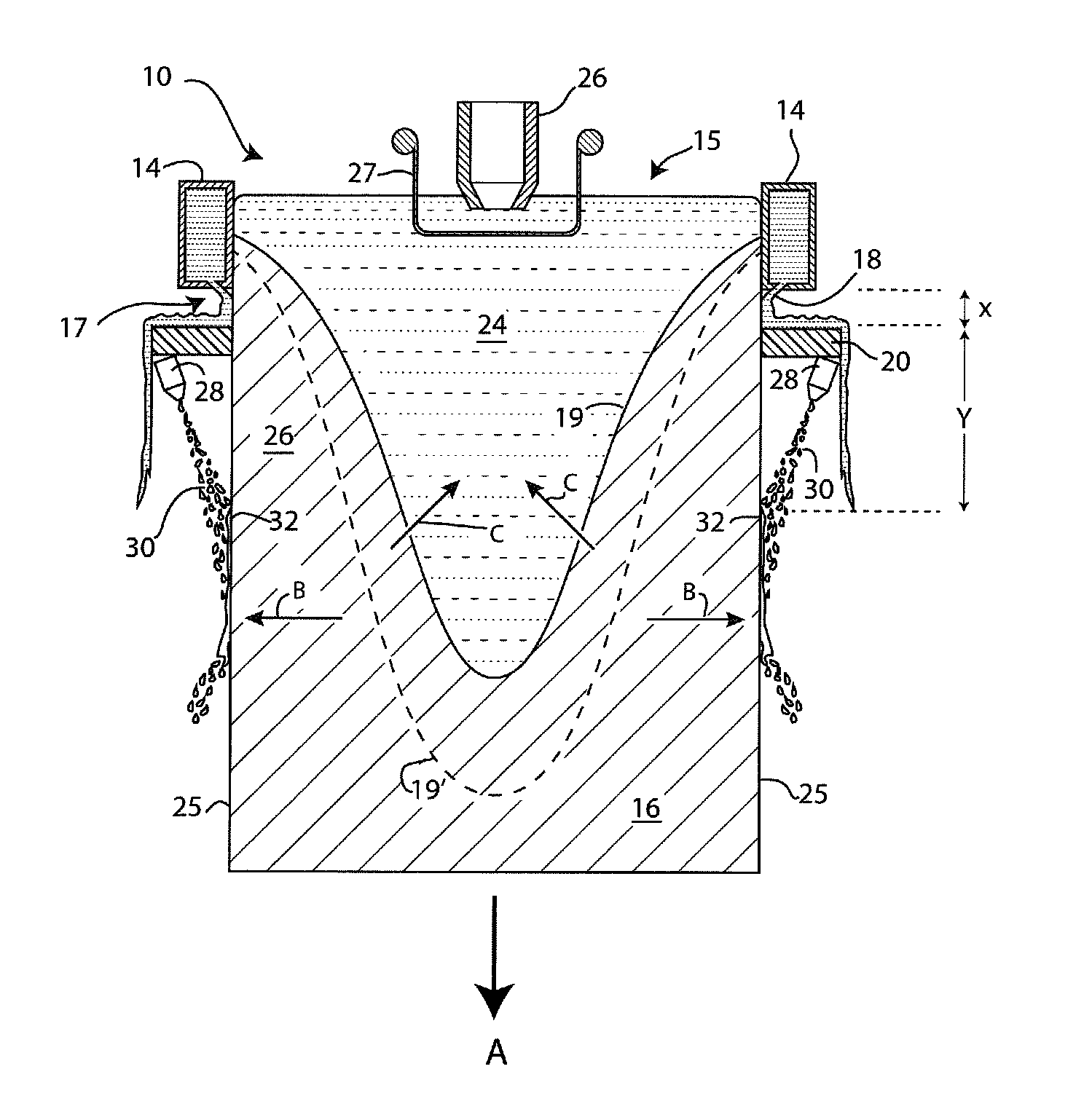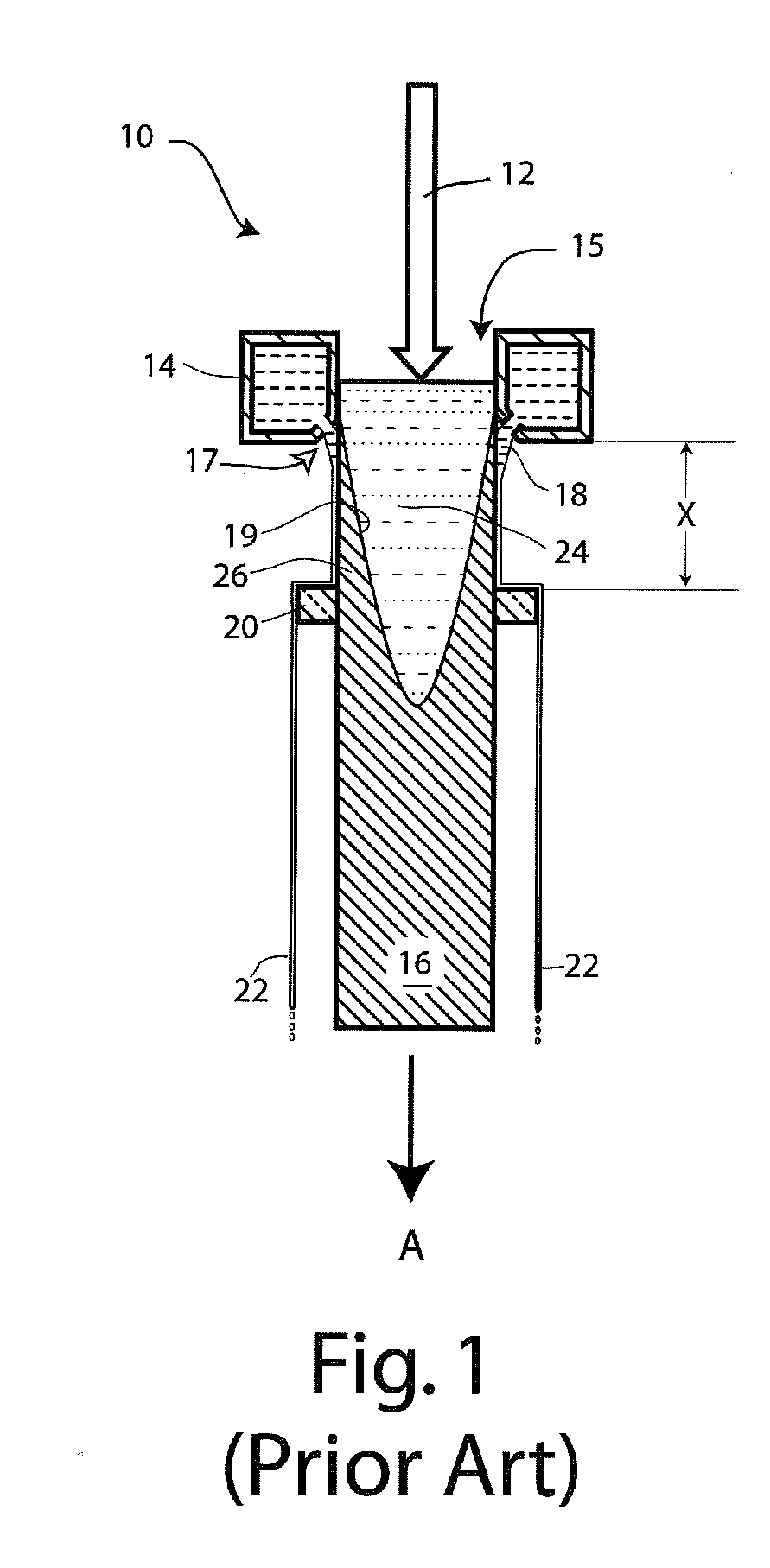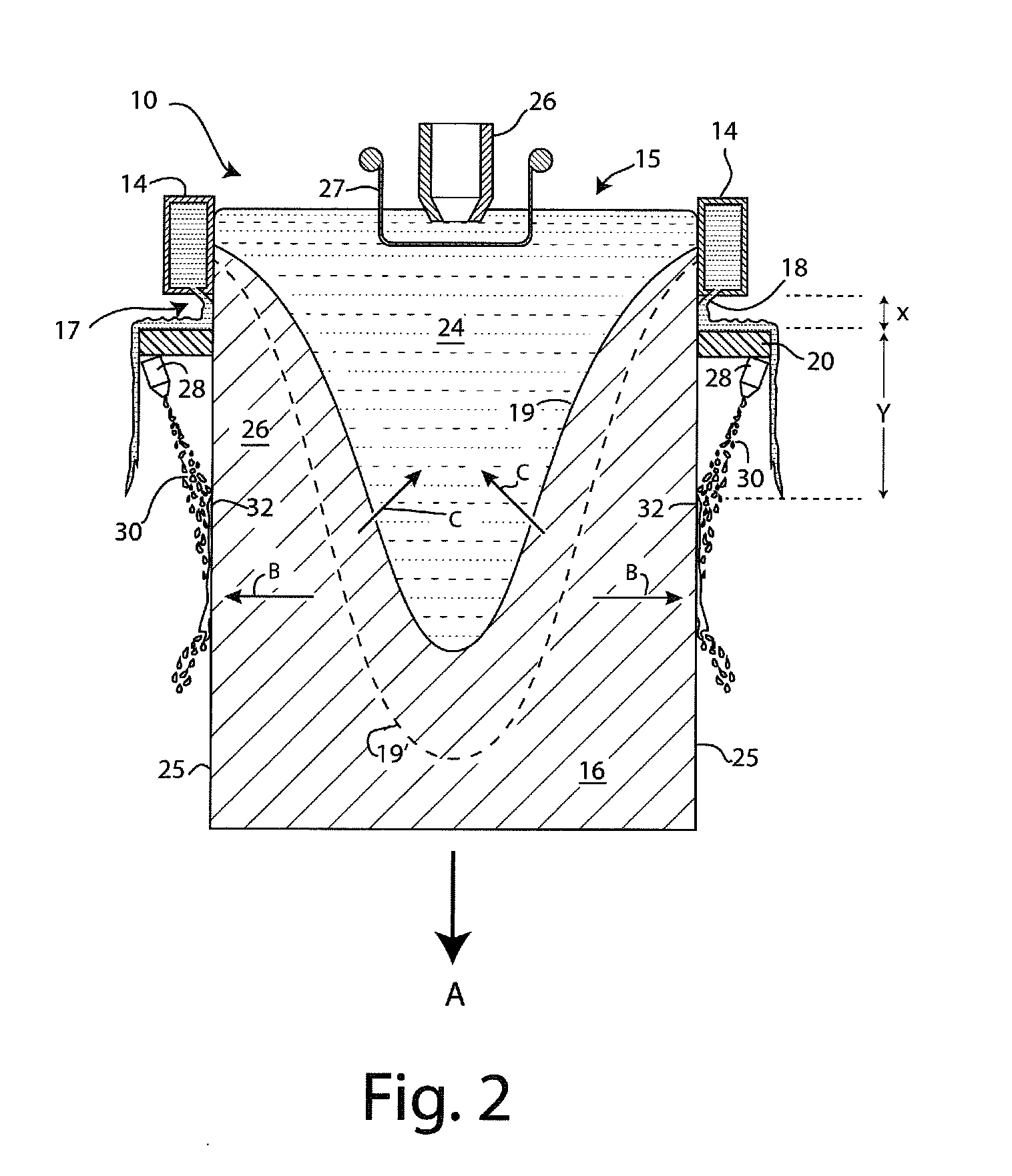In-situ homogenization of DC cast metals with additional quench
- Summary
- Abstract
- Description
- Claims
- Application Information
AI Technical Summary
Benefits of technology
Problems solved by technology
Method used
Image
Examples
examples
[0052]Experimental ingot castings were carried out to investigate the effects of direct chill casting with in-situ homogenization both with and without a quench (tertiary cooling) to investigate the effects of exemplary embodiments of the invention. The results obtained are illustrated in FIGS. 4 to 19 of the accompanying drawings.
[0053]First, a brief description of each sample discussed below. These samples are listed in chronological order and not in the order that they appear below.
[0054]Sample 1 is a test sample cast in a production center on a 600×1850 mm mold (23.6×72.8 inch) with a cast speed of 68 mm / min (2.68 in / min). This cast used the normal DC casting practice.
[0055]Sample 2 is from the same cast as Sample 1, but from a different ingot that underwent the in-situ homogenization method. This resulted in a maximum rebound temperature of 550° C. (1022° F.). Sample 2 refers to a slice cut from this ingot, with multiple points of interest examine across the width and thickness...
PUM
| Property | Measurement | Unit |
|---|---|---|
| Temperature | aaaaa | aaaaa |
| Temperature | aaaaa | aaaaa |
| Temperature | aaaaa | aaaaa |
Abstract
Description
Claims
Application Information
 Login to View More
Login to View More - R&D
- Intellectual Property
- Life Sciences
- Materials
- Tech Scout
- Unparalleled Data Quality
- Higher Quality Content
- 60% Fewer Hallucinations
Browse by: Latest US Patents, China's latest patents, Technical Efficacy Thesaurus, Application Domain, Technology Topic, Popular Technical Reports.
© 2025 PatSnap. All rights reserved.Legal|Privacy policy|Modern Slavery Act Transparency Statement|Sitemap|About US| Contact US: help@patsnap.com



